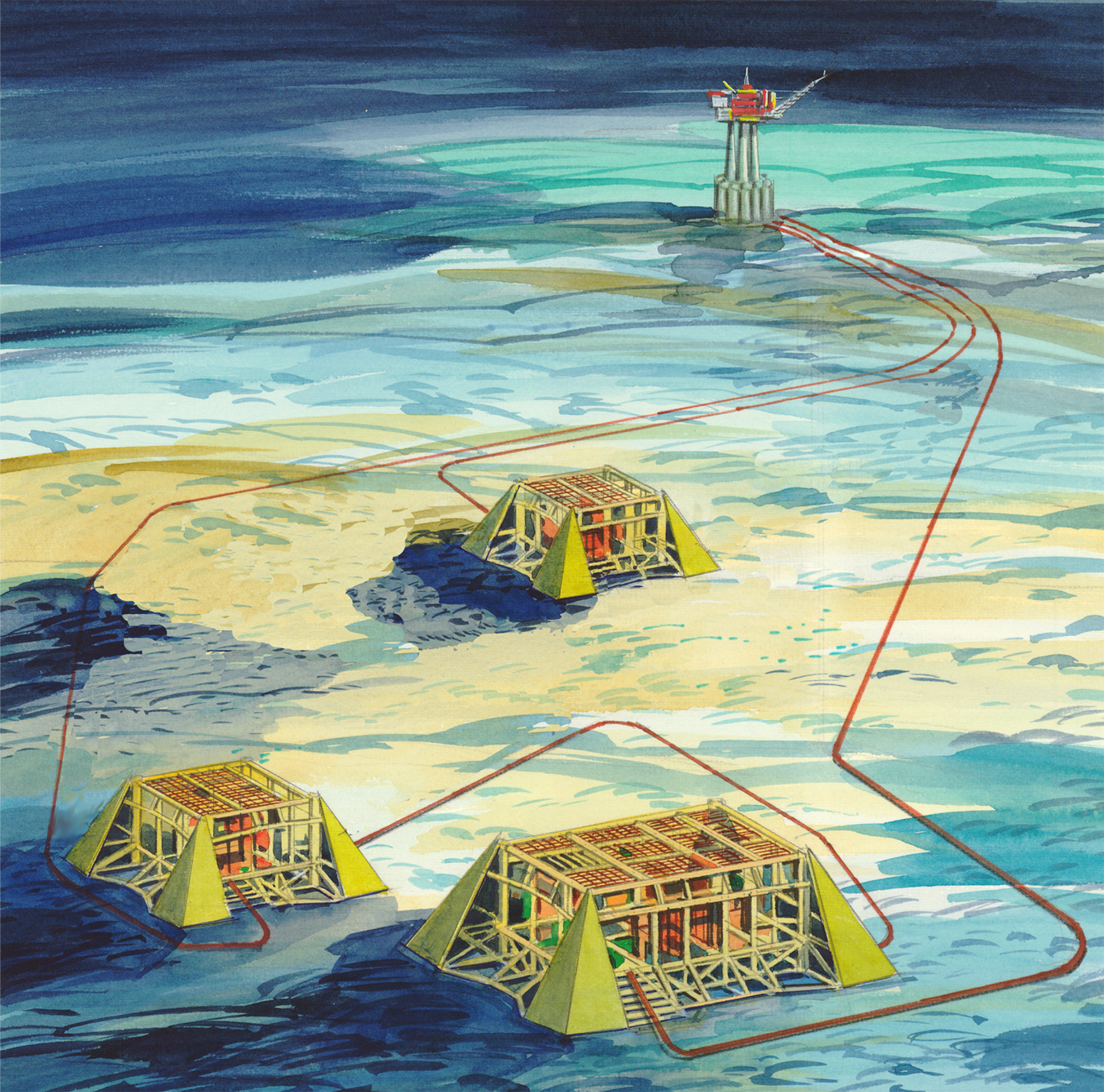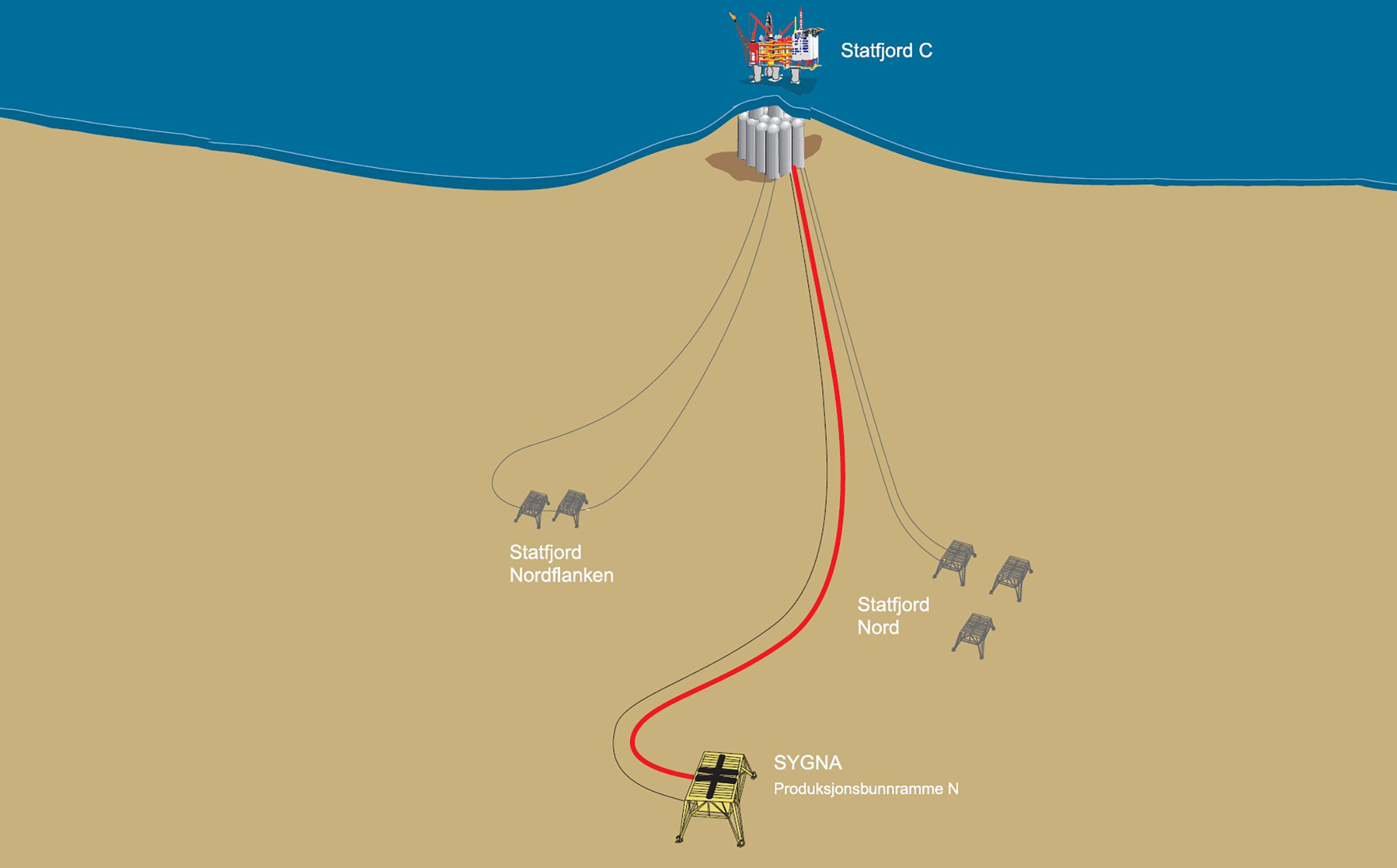The Statfjord satellites
The Statfjord satellites is a collective term for three different reservoirs which have each been developed with their own solution, and tied back to the main field nearby. Statfjord North and East were developed as a single project, while Sygna forms part of the same licences as Statfjord East. The Statfjord north flank is regarded as part of the main licence. The satellites collectively increase reserves in the overall Statfjord area by about 15 per cent.

More about geology and subsea
close
Close

 Statfjord satelitter,
Statfjord satelitter, Produksjonsstart Sygna, forsidebilde, historie, Statfjord subsea, Tilknytningsavtaler, Statfjord satelitter
Produksjonsstart Sygna, forsidebilde, historie, Statfjord subsea, Tilknytningsavtaler, Statfjord satelitter